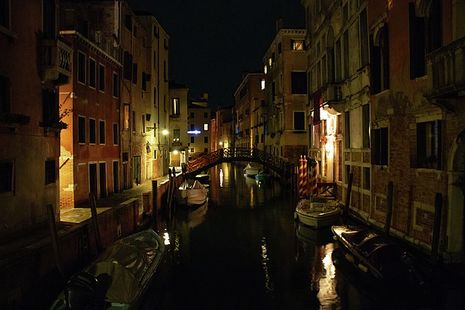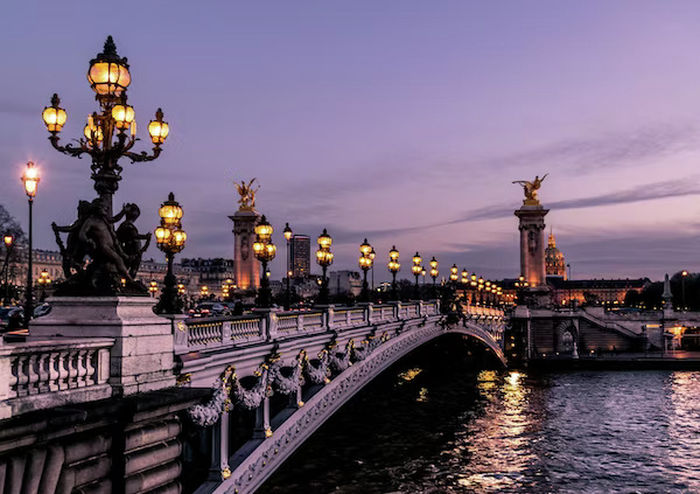A Haunting in Venice: Branagh cracks the case
Genevieve Badia-Aylin revels in the camp-gothic thrills of this latest Poirot outing

The bosses at ITV surely trembled when Kenneth Branagh decided to take on Hercule Poirot. Or, rather, take on the indomitable David Suchet, darling of daytime television, and the smirking face of the iconic detective for over twenty years, from 1989 to 2013. Exploding onto the silver screen with a frankly gargantuan moustache, Branagh’s Poirot was a daring response to this much-loved institution, promising all the suspense and idiosyncrasies of the Suchet iteration but with a high-budget, all-star twist. Yet results were mixed – the lukewarm reviews for A Murder on the Orient Express (2017), and the decidedly icy reception of its sequel Death on the Nile (2022), might have appeared to damn the Hamlet director to his own hubris. Had the world, quite frankly, just had too much Kenneth?
A Haunting in Venice will force you to eat your words. The year is 1947 and our hero, quietly settled on the banks of misty Venetian canals, seems at first a far cry from his previous iterations. The thrill of the chase has been exchanged for morning pastries (delivered by gondola, in true Poirot style), while lines of eager to-be-clients are ignored, or, if they’re less lucky, given a thumping by his shadowy bodyguard. This fragile peace is quickly shattered, however, as an old friend (a crime-writing foil to Christie herself, played with a mischievous glint in her eyes by Tina Fey) requests Poirot’s help in investigating a supposed psychic medium – a classic case of fraud, perhaps, or the real deal? What might have been a simple case of debunking cheap charlatanism, morphs, of course, into a tale of murder and mystery – it’s a classic Christie set-up, fitted with shifty servants, jealous ex-fiancés, and a grieving mother with nothing left to lose.
We are first introduced to the spooky dimension of the film via – and one, perhaps, might have to forgive Branagh for his decision to Americanise so brashly – a children’s Halloween party; a product of the occupying American forces, who fill the streets with enough English to send Giorgia Meloni into a coma. At first, the film barrels head-first into kitsch: think a zoetrope with flickering skeletons or a shadow-puppet show telling the macabre story of the haunted house – the Palazzo dei Lacrime dei Giovani, or ‘Palazzo of Children’s Tears’– into which we are so warmly invited. But as the awaited séance gets underway, and guests at the party start to be picked off in a series of gruesome murders, the veil between what’s real and what’s not starts to grow thinner and thinner – the house’s apparitions (genuinely paranormal, or figments of the imagination?) begin to crawl out of the woodwork.
“The film barrels head-first into kitsch”
Haris Zambarloukos’ cinematography takes pleasure in its jarring gaze. Moments of sharp light carve out space in the nothingness, yet we’re left feeling twice as uneasy as when we were left in the dark. Hildur Guðnadóttir’s score is simple yet menacing, injecting the series’ usual campiness with a sense of impenetrable eeriness, a quiet murmur of foreboding. Branagh’s spectral vistas, depicting a Venice growing weary under the weight of its past, rest on the verge of Italian postwar neorealism, as he evokes the quiet apocalypse of Rome, Open City and the jutting silhouettes of Rocco and His Brothers. But of course, Poirot must be baroque. Everywhere, the eye is left to feast: Renaissance statues lurking in grand dining rooms, crystal chandeliers swaying over ornate Persian carpets. The murder mystery has become a ghost story, with all the excess trimmings that entails.
“A Venice growing weary under the weight of its past”
A Haunting in Venice embraces the delights of genre, and spectacularly so. The result is a phantasmagoria of twists and turns, as the campy premise of the film descends into a sophisticated exploration of mortality, memory, and loss – should we, the film seems to ask, let ourselves be haunted by the past? Surely if we do, our ghosts will take no prisoners. Despite the occasional rock of the boat – the trigger-happy employment of Dutch angles does take some getting used to – Branagh’s Poirot finally feels like a protagonist with depth, his audacity now jaded, his bravado peeled back to reveal a fragile sense of vulnerability. Third time, it seems, really is the charm.
A Haunting in Venice is in UK cinemas now
 News / Cambridge postgrad re-elected as City councillor4 May 2024
News / Cambridge postgrad re-elected as City councillor4 May 2024 News / Cambridge students set up encampment calling for Israel divestment6 May 2024
News / Cambridge students set up encampment calling for Israel divestment6 May 2024 News / Some supervisors’ effective pay rate £3 below living wage, new report finds5 May 2024
News / Some supervisors’ effective pay rate £3 below living wage, new report finds5 May 2024 News / Gender attainment gap to be excluded from Cambridge access report3 May 2024
News / Gender attainment gap to be excluded from Cambridge access report3 May 2024 News / Academics call for Cambridge to drop investigation into ‘race realist’ fellow2 May 2024
News / Academics call for Cambridge to drop investigation into ‘race realist’ fellow2 May 2024







